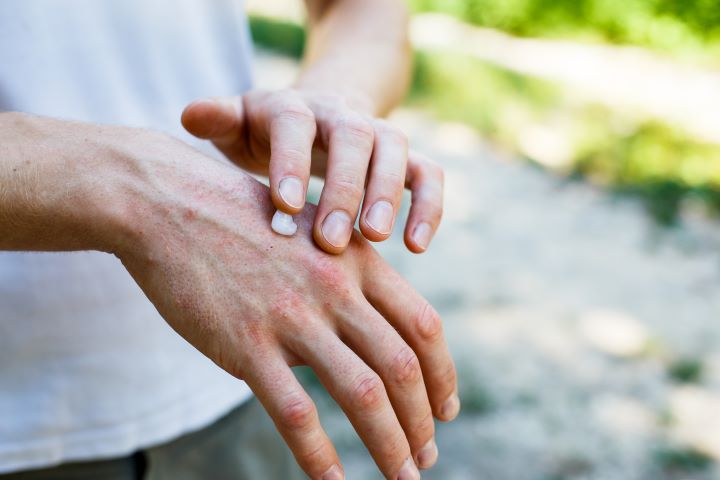Understanding Atopic Dermatitis and Current Treatment Options in 2025 – General Overview
Atopic dermatitis can present in a variety of forms, especially in adults and older individuals. This article offers general educational information about symptoms, early signs, and emerging therapeutic options in 2025. It does not promote or recommend any specific product, including prescription medications.

What are common signs of atopic dermatitis in adults?
Atopic dermatitis in adults can manifest differently compared to children. Common signs include:
-
Dry, scaly patches of skin, often on the hands, neck, and face
-
Intense itching, especially at night
-
Thickened, cracked, or leathery skin texture
-
Redness and inflammation in affected areas
-
Small, raised bumps that may ooze or crust over when scratched
Adults may also experience more persistent symptoms compared to children, with flare-ups occurring in response to various triggers such as stress, allergens, or changes in weather.
How can atopic dermatitis appear differently in older people?
In older individuals, atopic dermatitis can present unique challenges and manifestations:
-
Increased skin dryness and fragility
-
More widespread distribution of affected areas
-
Less pronounced itching, but potentially more severe skin damage
-
Higher risk of secondary infections due to compromised skin barrier
-
Potential confusion with other age-related skin conditions
It’s important for healthcare providers to consider these age-related differences when diagnosing and treating atopic dermatitis in older patients.
What should be considered when exploring new treatment options?
When considering new treatment options for atopic dermatitis, several factors should be taken into account:
-
Severity and extent of symptoms
-
Patient’s age and overall health status
-
Potential side effects and long-term safety profile of treatments
-
Impact on quality of life and daily activities
-
Availability and accessibility of new therapies
-
Cost and insurance coverage considerations
It’s crucial to work closely with a dermatologist or allergist to develop a personalized treatment plan that addresses individual needs and concerns.
Where to find general information about managing severe eczema?
Reliable sources for managing severe eczema include:
-
National Eczema Association (www.nationaleczema.org)
-
American Academy of Dermatology (www.aad.org)
-
National Institute of Allergy and Infectious Diseases (www.niaid.nih.gov)
-
PubMed Central for scientific research articles (www.ncbi.nlm.nih.gov/pmc)
-
Local dermatology clinics and university medical centers
These resources offer up-to-date information on treatment guidelines, research developments, and support networks for individuals dealing with severe eczema.
What are recent developments in atopic dermatitis care in 2025?
As of 2025, several advancements have been made in atopic dermatitis care:
-
Targeted biologic therapies: New monoclonal antibodies that specifically target inflammatory pathways involved in atopic dermatitis
-
Improved topical formulations: Enhanced drug delivery systems for more effective and longer-lasting topical treatments
-
Microbiome-based therapies: Treatments aimed at restoring the skin’s natural microbial balance
-
Gene therapy approaches: Experimental treatments targeting genetic factors associated with atopic dermatitis
-
Artificial intelligence-assisted diagnosis: Advanced imaging and AI algorithms to improve early detection and monitoring of skin changes
These developments offer promising new avenues for managing atopic dermatitis, particularly for patients with severe or treatment-resistant cases.
How do emerging therapies compare to traditional treatments?
| Treatment Type | Examples | Mechanism of Action | Potential Benefits | Considerations |
|---|---|---|---|---|
| Traditional Topicals | Corticosteroids, Calcineurin inhibitors | Reduce inflammation | Well-established efficacy | Long-term side effects |
| Systemic Immunosuppressants | Cyclosporine, Methotrexate | Broadly suppress immune response | Effective for severe cases | Systemic side effects |
| Biologic Therapies | Dupilumab, Tralokinumab | Target specific inflammatory pathways | Potentially more targeted approach | Higher cost, long-term data still emerging |
| Microbiome Therapies | Topical probiotics, Live bacterial treatments | Restore skin microbiome balance | Potentially fewer side effects | Efficacy still being established |
| Gene Therapies | CRISPR-based treatments (experimental) | Address genetic factors | Potential for long-term remission | Still in early research phases |
Prices, rates, or cost estimates mentioned in this article are based on the latest available information but may change over time. Independent research is advised before making financial decisions.
In conclusion, the landscape of atopic dermatitis treatment continues to evolve, offering new hope for patients struggling with this chronic condition. While traditional treatments remain valuable, emerging therapies provide additional options for those with difficult-to-treat cases. As research progresses, we can expect further refinements in our approach to managing atopic dermatitis, potentially leading to more personalized and effective treatment strategies.
This article is for informational purposes only and should not be considered medical advice. Please consult a qualified healthcare professional for personalized guidance and treatment.
The shared information of this article is up-to-date as of the publishing date. For more up-to-date information, please conduct your own research.




